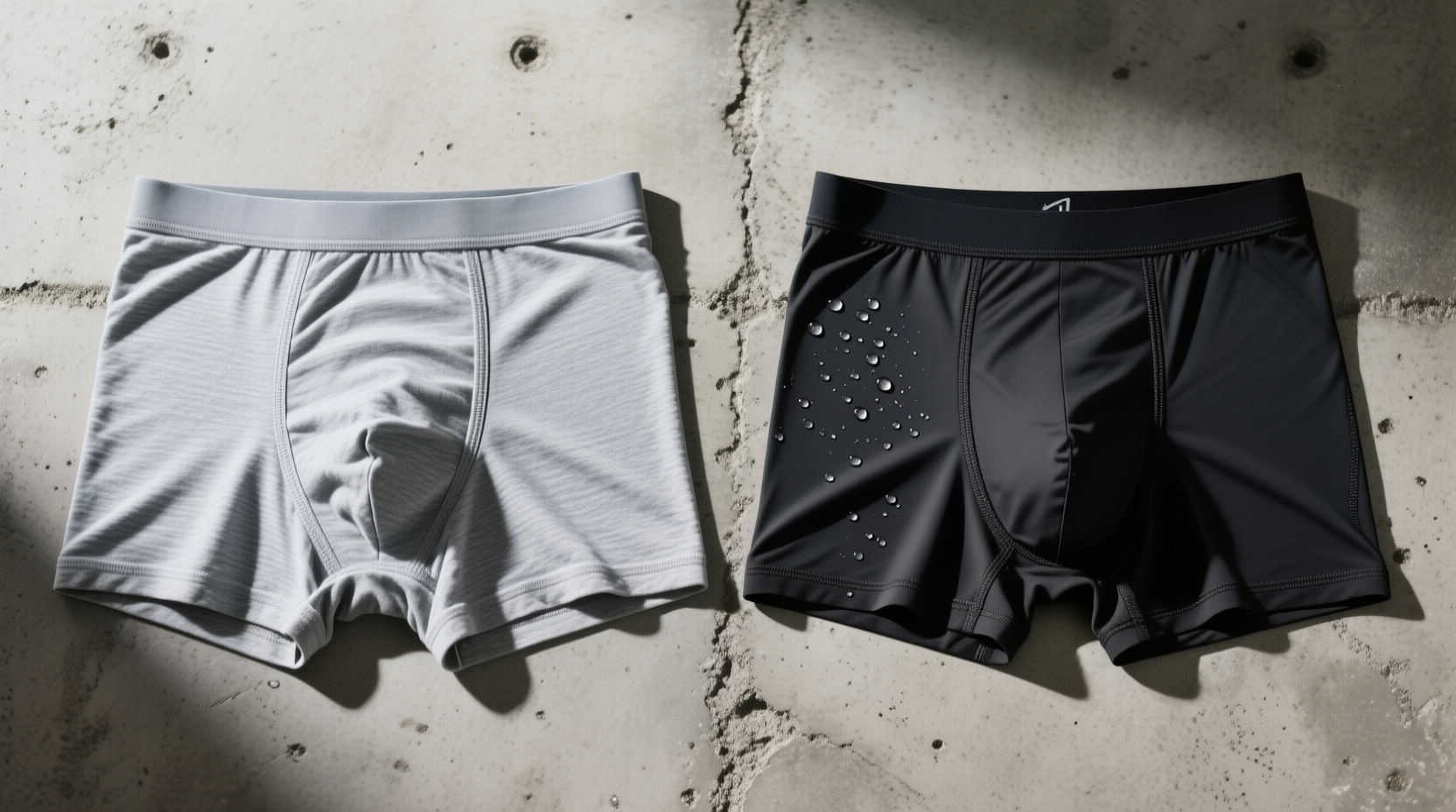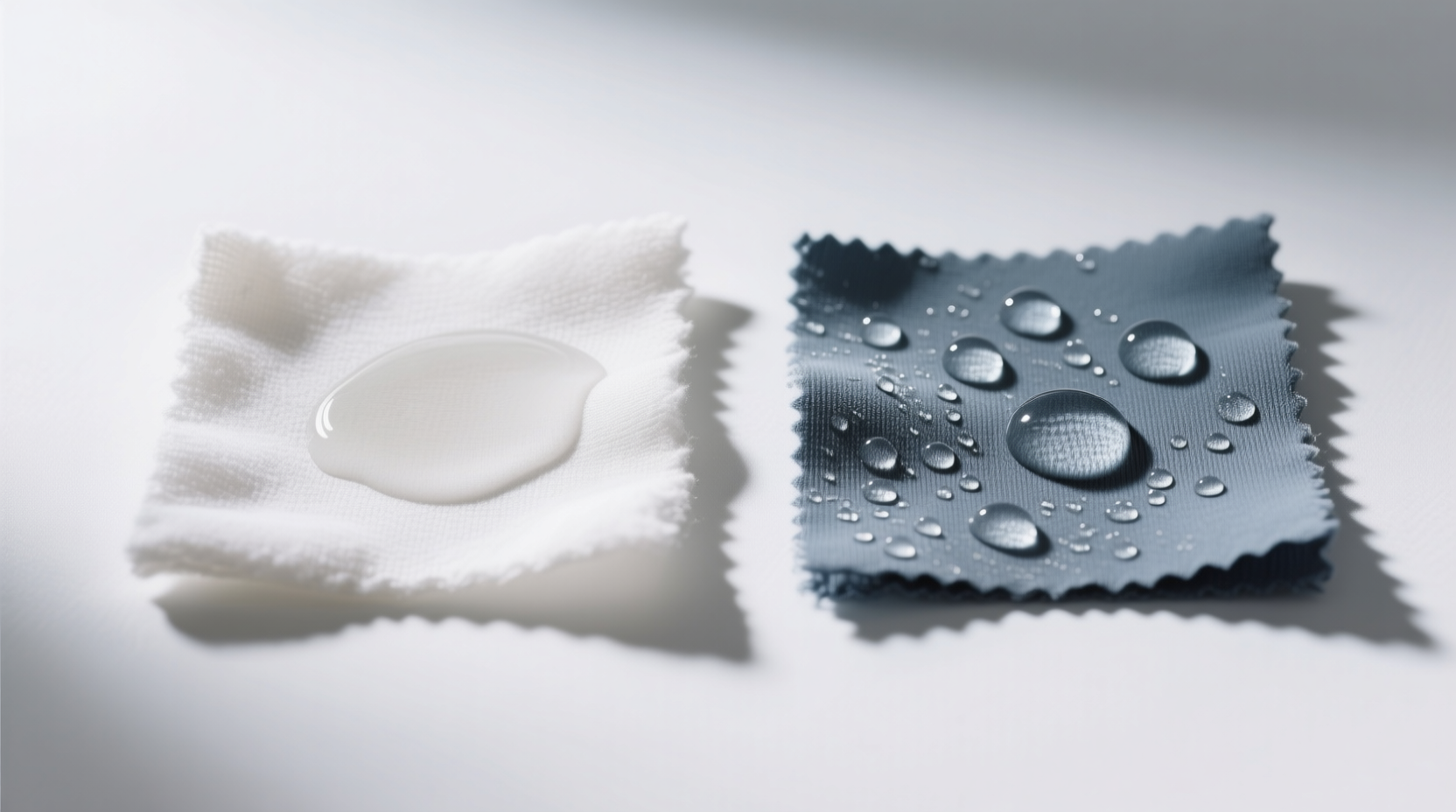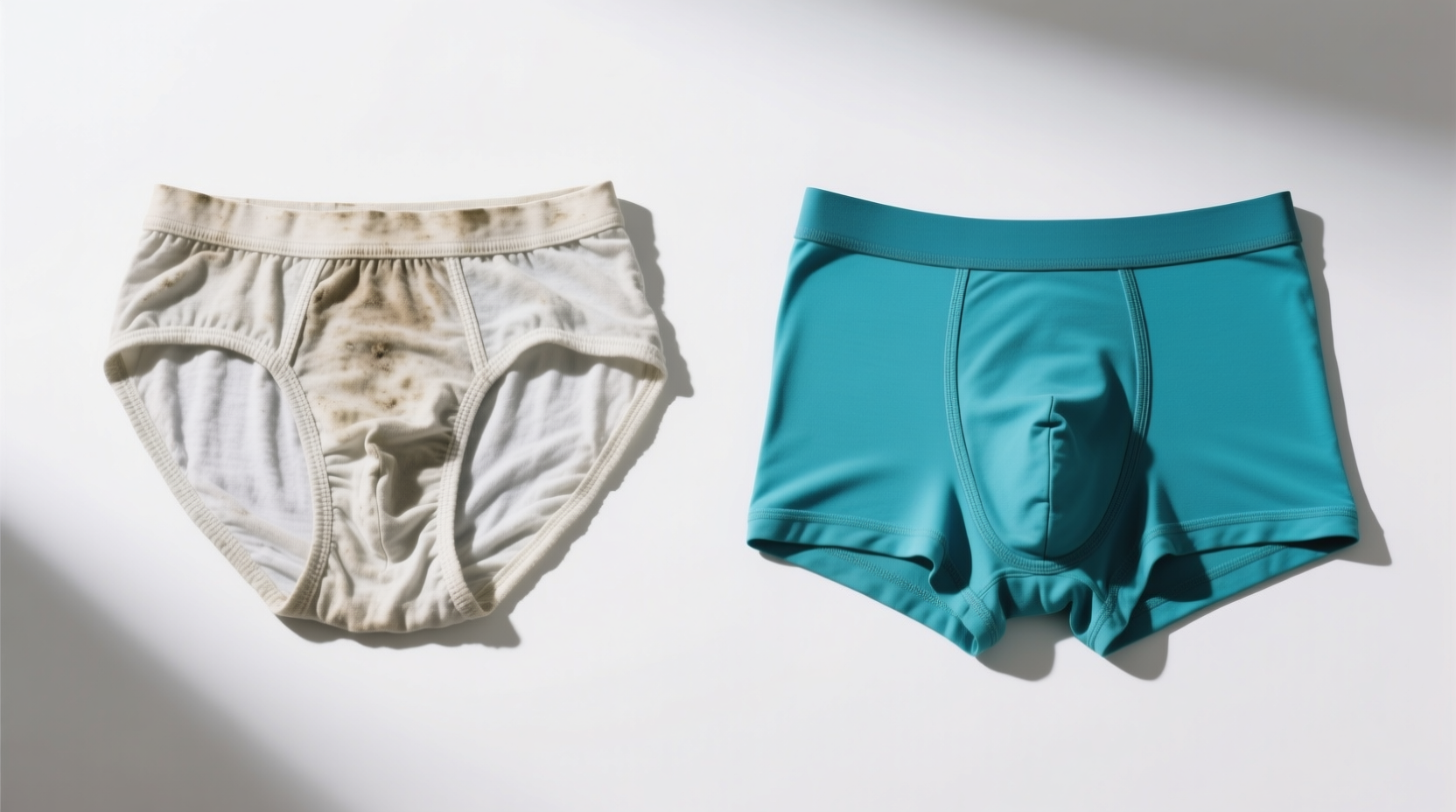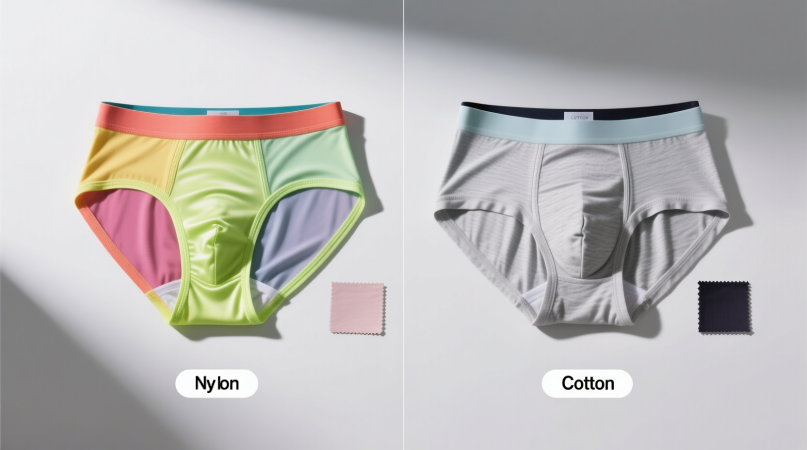Look, I get it. You’re not here for fluff. You’re running a brand, building a line, or just trying to figure out what the hell to stock for your Shopify store. And somewhere between margins, shipping delays, and customer complaints about “weird chafing,” you realized: fabric choice is the silent killer of good intentions.
At Fexwear, we’ve seen underwear lines die on arrival because someone picked cotton for the “natural” halo… only to have customers return it soaked in sweat after one gym session. We’ve also seen nylon go wrong — cheap, plasticky, and suffocating. So let’s cut the marketing noise. Let’s talk about nylon underwear vs cotton like adults who’ve actually touched the stuff, tested it, and lost money on bad bets.
This isn’t a lab report. It’s a post-shift debrief. The kind you have when you’re tired, honest, and done pretending one fabric fits all.
It’s Not About “Better” — It’s About What the Hell You’re Actually Doing

Let’s start with the lie we all keep buying: “Cotton is breathable, so it’s better.”
No. Not always.
Yes, cotton breathes. But it holds moisture like a sponge. And when you’re not just sitting at a desk — when you’re commuting, working out, or just alive in a hot climate — that breathability turns into a swamp. I had a client in Miami. Sold “premium cotton” underwear. Returns spiked in July. Not because of fit. Because people were walking around in damp fabric all day. Smell? Yeah. Chafing? Absolutely.
Then there’s nylon. The villain of the “natural fabric” crowd. But here’s the truth: nylon wicks. It moves sweat away. It dries fast. It doesn’t sag when wet. And when blended right, it doesn’t feel like you’re wearing a trash bag.
So stop asking “which is better.” Ask: Who’s wearing it? Where? And what are they doing all day?
Because if you’re selling to desk jockeys who value softness over function, cotton wins.
If you’re selling to fitness influencers, shift workers, or travelers? Nylon — or a smart blend — is non-negotiable.
And if you’re still stuck on cotton because it “feels natural,” go read our full guide on fabric recommendations for sportswear . I break down the science, the sustainability myths, and the real-world performance data. This isn’t about purity. It’s about performance.
Comfort Is a Lie — Until You’ve Worn Wet Cotton for 8 Hours

Let’s talk about the feel.
Cotton feels soft. No argument. It’s cozy. It’s familiar. It’s what you wore as a kid. It’s what your partner probably prefers when you’re lounging.
But comfort isn’t just touch. It’s function. It’s not having to adjust yourself every hour because your underwear is clinging like a second skin.
I used to swear by 100% cotton. Then I spent a week in Bangkok in May. Humidity like soup. Walked 15K steps a day. By day three, my cotton briefs were heavy, damp, and riding up like they had a vendetta. I switched to a nylon-spandex blend. Light. Dry. Staying put. Not sexy, but functional.
That’s the gap no one talks about: comfort is contextual.
- Cotton: best for low-activity, cool environments, sensitive skin.
- Nylon: best for movement, heat, sweat, and durability.
And here’s the kicker — modern nylon isn’t the stiff, shiny stuff from the ’90s. We’re talking soft-touch, brushed-back micro-nylon now. Feels like silk. Performs like armor.
But — and this is a big but — cheap nylon? Yeah, it’s awful. Thin, plasticky, traps heat. That’s why sourcing matters. That’s why you don’t just order from Alibaba and pray.
At Fexwear, we test every fabric batch for hand feel, moisture transfer, and stretch recovery. Because if it feels like garbage after one wash, your brand’s done.
Want to see how we pick the right materials? We walk you through it in our free design and material selection service . No charge. Just real talk and better fabric choices.
Sweat Happens. What Your Underwear Does With It — That’s the Real Test

Let’s get into the science — but keep it simple.
Your body sweats to cool down. That’s good.
But if your underwear holds that sweat? You’re not cooling. You’re stewing.
Here’s how each fabric handles it:
See the trade-off?
Cotton breathes, but it stays wet. That damp environment? Perfect for bacteria. That’s why cotton underwear can start to smell after one wear — even if you didn’t work out.
Nylon doesn’t absorb, but it wicks. It pulls sweat to the surface, where it evaporates. Keeps you dry. Reduces odor. But — and this matters — only if it’s well-designed.
I had a brand come to us after their “performance” nylon underwear failed. Why? They used a tight, non-perforated weave. No airflow. So even though it wicked, it trapped heat. Lesson: wicking without breathability is just a sweaty trap.
That’s why we use engineered mesh zones in our nylon blends. Strategic ventilation. Not just fabric — design.
If you’re building activewear or performance underwear, check our full fabric guide . It’s got moisture-wicking ratings, breathability scores, and real wash-test data.
Durability: Because No One Wants Saggy Underwear After 5 Washes

Let’s talk about what happens after the first wear.
Cotton feels great day one. Day 30? Not so much.
It pills. It fades. The waistband loses elasticity. The fabric stretches out and never recovers.
Nylon? Tough as hell.
It resists abrasion. It keeps its shape. It doesn’t pill easily. And when blended with spandex (10–20%), it snaps back.
I did a test once: bought 5 top-brand cotton briefs and 5 nylon-blend trunks. Wore them daily for 3 months. Washed them the same way — cold, gentle cycle, air dry.
Results?
- Cotton: 3 out of 5 were unwearable by week 8. Waistbands loose, fabric thin, one ripped at the seam.
- Nylon: All 5 still going strong at week 12. One had minor pilling, but fit and function intact.
And here’s the cost angle: yes, nylon is usually more expensive per yard. But if it lasts 2x as long, your customer’s real cost per wear is lower.
That means fewer returns. Fewer complaints. Fewer “this fell apart” reviews.
And for you? It means you can charge more for a product that actually performs.
But — and this is critical — not all nylon is equal.
Cheap, low-denier nylon? It’ll snag. It’ll feel thin. It’ll degrade fast.
We use 30D–50D recycled nylon in our performance lines. Strong, soft, sustainable. And we reinforce stress zones — seams, leg openings — so they don’t blow out.
Want to see how we balance cost and quality? We break it down in our cost-reduction guide . It’s not about cutting corners. It’s about cutting waste.
Sustainability: The Messy Truth No One Wants to Admit

Let’s get uncomfortable.
Everyone wants to be “sustainable.” But most people don’t know what that actually costs — or what trade-offs they’re making.
Cotton:
- Natural? Yes.
- Biodegradable? Yes.
- But — conventional cotton uses 2,700 liters of water to make one t-shirt.
- And pesticides? Heavy. Soil degradation? Real.
Organic cotton is better. But it’s 30–50% more expensive. And it still uses a lot of water.
Nylon:
- Synthetic? Yes.
- From oil? Yes.
- But — recycled nylon (like ECONYL®) uses 50% less energy than virgin.
- And it keeps fishing nets and fabric waste out of oceans.
But — it sheds microplastics when washed.
So which is “better”?
I don’t know. And anyone who says they do is selling something.
At Fexwear, we don’t pick sides. We pick solutions.
- For softness + sustainability: organic cotton.
- For performance + eco-impact: recycled nylon.
- For balance: 70% organic cotton / 30% recycled nylon blend.
And we’re honest about the limits. Yes, nylon sheds. So we recommend customers use a microfiber filter when washing.
Want the full breakdown? Our sustainable fabric guide has certifications, water use stats, and carbon footprints. No greenwashing. Just data.
The Real Answer? Stop Choosing. Start Blending.

Look, I’m tired of the “cotton vs nylon” war.
It’s like arguing diesel vs electric when the real future is hybrid.
The best underwear today? It’s not 100% of anything.
It’s engineered.
We use cotton-lined fronts for softness against sensitive skin.
Nylon-blend backs and sides for support, stretch, and sweat management.
Flatlock seams to prevent chafing.
Moisture-wicking mesh in high-sweat zones.
One brand came to us wanting “all-cotton, all-natural.” We said no. Not because we don’t like cotton. But because their customers were runners. And runners sweat. A lot.
We proposed a 80/20 organic cotton-recycled nylon blend. Soft. Sustainable. Functional.
They launched. Sold out in 3 weeks. Zero returns for discomfort.
That’s the power of not being dogmatic.
If you’re building a line, stop asking “which fabric.” Start asking “what do my customers actually need?”
And if you’re stuck, let us help. We’ve got a free design and material consultation . No pitch. Just real advice.
Wrap-Up: The Only Rule That Matters
None of this matters if your customer feels like crap in your underwear.
Not the marketing. Not the “premium feel.” Not the eco-label.
Just: Did it keep them dry? Did it stay put? Did it survive the wash?
That’s the only test.
And if you’re still guessing, you’re already behind.
FAQs
Is nylon underwear bad for your skin?
Not if it’s well-made. Cheap nylon can cause irritation. But high-quality, soft-touch nylon with good ventilation? Fine for most. We’ve had zero skin complaints on our blends.
Does cotton underwear shrink?
Yes. Especially if washed in hot water. Always pre-shrink cotton or blend it with synthetics to stabilize it.
Can I use nylon for everyday wear?
Absolutely. As long as it’s breathable and well-fitted. Our bestsellers are nylon-blend trunks for daily wear.
Is recycled nylon as good as virgin?
Yes — and sometimes better. Modern recycled nylon matches virgin in strength and wicking. We use it in 60% of our performance lines.
Do cotton-nylon blends pill?
Less than pure cotton. We use ring-spun yarns and tighter knits to minimize pilling.
Which is more sustainable — cotton or nylon?
Depends. Organic cotton wins on biodegradability. Recycled nylon wins on water and waste. We use both, responsibly.
How do I stop odor in underwear?
Wash after every wear. Use odor-resistant fabrics (like our Tencel-nylon blend). And don’t let damp underwear sit in your gym bag.
Can I get custom blends?
Yes. We develop custom fabric mixes for brands. Just talk to us — it’s part of our OEM/ODM service .
Call to Discussion
You’ve probably launched something that flopped because of fabric. Or had a customer complain about something you didn’t see coming. Or stood in front of a rack of samples wondering, “Which one actually works?”
I’ve been there. We all have.
The underwear game isn’t sexy. But it’s foundational. And getting it wrong costs more than money.
So — what’s your fabric war story?
Agree, disagree, or got a wild story? Let’s hear it.

